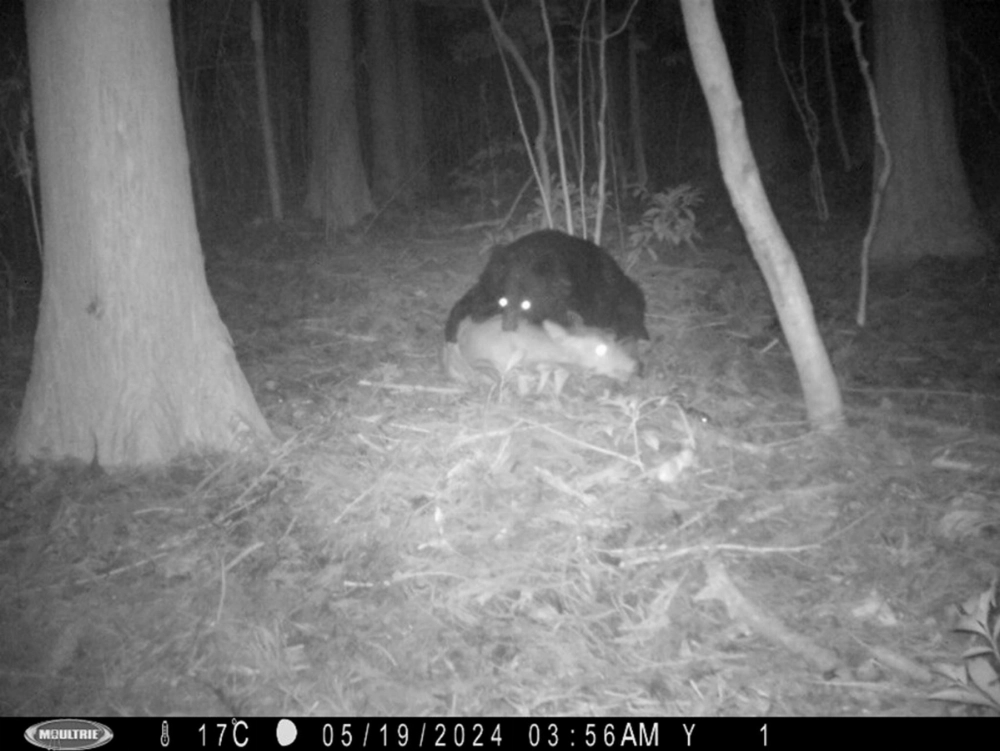A research team from Tokyo University of Agriculture and Technology has successfully captured footage of an Asian black bear attacking a live deer caught in a trap — marking the first such recording and sparking safety concerns.
While bears occasionally feed on deer carcasses or fawns, it is highly unusual for them to prey on live adult deer. The findings, published recently in the online edition of the International Association for Bear Research and Management’s journal, suggest that if bears learn to associate traps with easy prey, the risk of encounters with humans could rise.
The footage was recorded in May last year in a forested area of Nikko, Tochigi Prefecture. The deer, an adult female, was caught in a snare — a type of trap that uses a wire loop to ensnare an animal’s leg — at around 3 a.m. on May 19.

















With your current subscription plan you can comment on stories. However, before writing your first comment, please create a display name in the Profile section of your subscriber account page.